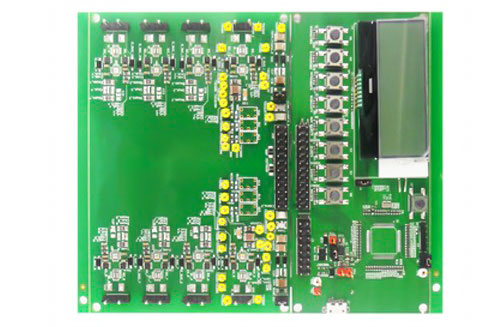How to design a microcontroller circuit
The PCB circuit design required for embedded microcontrollers is a considerable project. For advanced microcontrollers, data sheets and technical files can be as long as hundreds of pages.
Before you start designing your circuit, it's a good idea to draw a flowchart of all the major components in the project, including all peripherals that have an interface with the microcontroller.

ARM Cortex-M microcontroller
This article will focus on the PCB circuit design considerations required to import ARM Cortex-M microcontrollers. ARM Cortex-M microcontrollers are available in different versions from different chip manufacturers.
The ARM Cortex-M with 32-bit architecture is particularly well-suited for intensive and computationally intensive work compared to typical 8-bit microcontrollers. 32-bit microcontrollers also have advantages if there is a need for larger memory capacity or for future expansion of the system platform.
The ARM Cortex-M microcontroller we will discuss is the STM32 family from ST Microelectronics; more precisely, we will focus on the STM32F4 series.
However, the STM32 family actually includes many models, such as the ultra-low-power STM32L series and the series with higher and lower performance than the STM32F4 version. The most efficient version is the STM32F7, which can execute 1 billion instructions per second. In the lowest performing models, there are STM32L0 that only executes 26 million instructions per second.
Power supply design
The power supply of the circuit is one of the most important aspects of hardware design; do not wait until the later stages of the design to determine the power and ground configuration.
The current used by the microcontroller is determined by multiple factors, such as operating voltage, clock frequency, and load on the input/output pins.
A 1uF and 100nF ceramic capacitor (such as C7 and C8 in Figure 1) should be placed as close as possible to each power supply VDD pin on the MCU to provide power supply cancellation. In addition, a 4.7uF ceramic capacitor (C1 in Figure 1) should be installed near the IC on the main circuit wiring that supplies VDD.
Microcontrollers with analog-to-digital converters (ADCs) also typically have separate power supplies (VDDA) and ground pins (VSSA) for analog signals. These feet need to be specially avoided to avoid noise.
The VDDA pin should have 1uF and 10nF ceramic capacitors (C10, C11 in Figure 1) as close as possible to the VDDA pin. In most cases, I found that it is best to add an inductor (L1 in Figure 1) to the VDDA pin to form an LC low-pass filter to provide a more stable analog voltage.
If your supply voltage is higher than the microcontroller's input voltage limit, a buck linear regulator is usually required. For example, the TPS795xx from Texas Instruments has exceptionally low noise characteristics and can supply up to 500mA.
If your supply voltage is significantly higher than the voltage required by the microcontroller, a step-down switching regulator would be a better choice. When the input voltage is significantly higher than the output voltage, the linear regulator wastes too much power.
However, it is usually best to use a linear regulator for the output voltage of the switching regulator. This is because the linear regulator provides much lower voltage noise.
clock
The STM32F4 can be implemented with an internal or external system clock. The system clock used at startup is the internal clock (16 MHz), and the external clock source can be selected via software after the system is initialized.
The clock pin on the STM32F4 can drive an external 4 to 26 MHz quartz crystal (see X1 in Figure 1) or an external clock source up to 50 MHz.
The configuration of the crystal must be strictly in accordance with the instructions on the data sheet. In general, the wiring is short, and the load capacitance on the crystal is the same as suggested by the crystal manufacturer. Building 1, Senyang Electronic Technology Park, Guangming High-tech Park, Yutang Street, Guangming District, Shenzhen City.
Building 1, Senyang Electronic Technology Park, Guangming High-tech Park, Yutang Street, Guangming District, Shenzhen City.
 F:86-13418481618
F:86-13418481618
 [email protected]
[email protected]
 date:2018-11-10 11:36:00
date:2018-11-10 11:36:00

 Building 1, Senyang Electronic Technology Park, Guangming High-tech Park, Yutang Street, Guangming District, Shenzhen City.
Building 1, Senyang Electronic Technology Park, Guangming High-tech Park, Yutang Street, Guangming District, Shenzhen City.
 F:86-13418481618
F:86-13418481618
 [email protected]
[email protected]